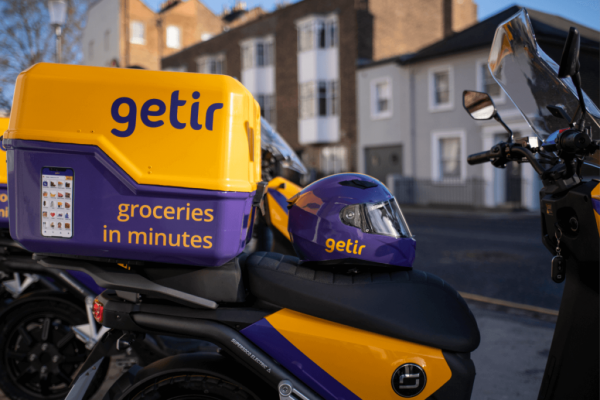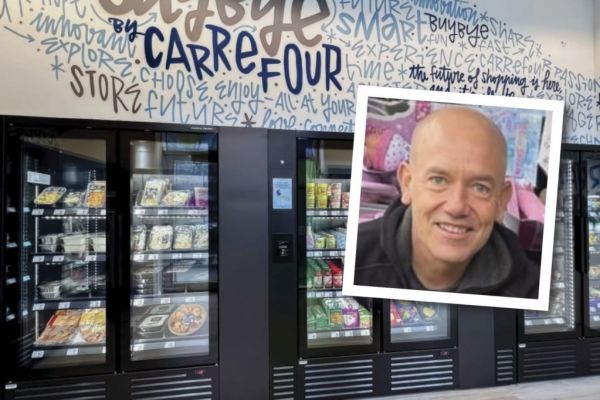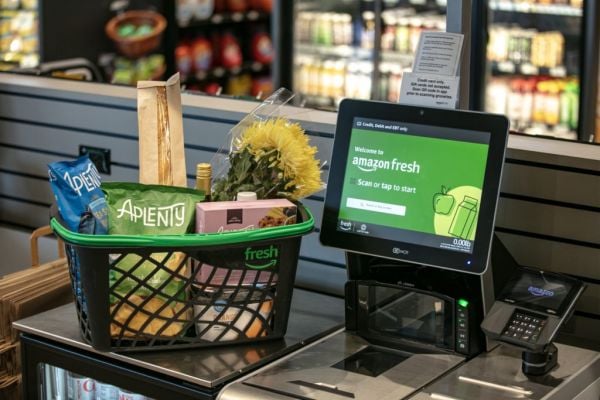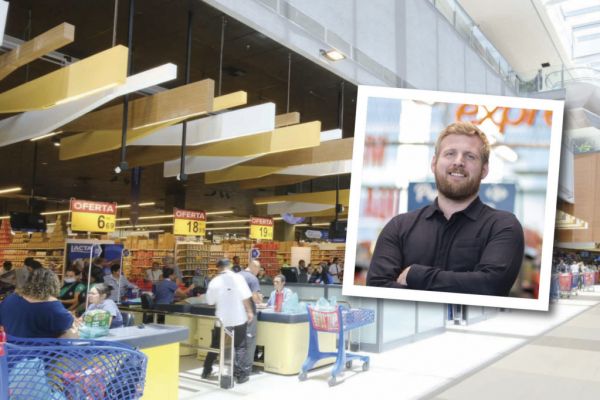The decision by CVS Health Corp. and Rite Aid Corp. to block Apple Inc.’s mobile-payment technology presages a long fight over the fees and customer data collected when people use smartphones to buy stuff.
Along with companies such as Wal-Mart Stores Inc. and Best Buy Co., which have said they won’t use Apple Pay, the pharmacy chains are holding out for a retailer-developed mobile-payment system known as CurrentC that’s slated to debut next year.
Their aim is to help retailers avoid credit-card transaction fees while giving them more sway over customer-reward programs. On the other side are technology companies such as Apple, which have developed their own platforms and are keeping their transaction data anonymous. The stakes will only rise in coming years if, as predicted, Apple Pay gains acceptance by the increasing number of iPhone users. The mobile-payments market will grow sevenfold to $90 billion in 2017 from $12.8 billion in 2012, predicts Forrester Research Inc.
Retailers “want more control over the experience,” said Bryan Yeager, an analyst at EMarketer Inc. in New York. “Whether it be through the data they collect or the marketing and promotions they’re able to deliver based on that data, they want as much control as possible, and they’d rather not work with Apple on something like that.”
CurrentC, developed by the Merchant Customer Exchange group, or MCX, will allow retailers to offer branded mobile wallets linked directly to shoppers’ checking accounts. Representatives from MCX, CVS and Wal-Mart didn’t respond to requests for comment.
Still Evaluating
Rite Aid, meanwhile, is still evaluating its mobile-payment options and is “committed to offering convenient, reliable and secure payment methods,” said Ashley Flower, a spokeswoman for the Camp Hill, Pennsylvania-based drugstore chain. For its part, Apple said the feedback it’s gotten on its new payment system from customers and retailers has been “overwhelmingly positive.”
“We are working to get as many merchants as possible to support this convenient, secure and private payment option for consumers,” said Trudy Muller, a spokeswoman for the Cupertino, California-based company. “Many retailers have already seen the benefits and are delighting their customers at over 220,000 locations.”
Apple Pay, which was unveiled earlier this month and works on the new iPhone 6 and iPhone 6 Plus models, is trying to gain the widespread appeal that has eluded previous efforts by Square Inc., Google Inc. and Softcard. Apple Pay functions as an extension of the existing payment system, with customers using their phones at stores in lieu of plastic cards.
Building Pressure
As more customers upgrade their phones to the newer models that work with Apple Pay, pressure will build on retailers to accept it, said Thad Peterson, a senior analyst with Aite Group, which is based in Boston. “It’s about getting customers to buy stuff, and you don’t want to stop customers from buying stuff just because you don’t offer a payment alternative they chose to use,” he said.
The MCX members shunning Apple Pay appear to be trying to prevent widespread adoption of the new payment system before their own product hits the market, Peterson said. “It would seem that they’re really trying to get a stake in the ground to say that MCX is the retailers’ solution to mobile payments,” he said.
Pilot Tests
CurrentC is in pilot tests in select locations across the country, with plans for a national rollout next year, according to a statement on its website.
Target Corp., another MCX member, doesn’t allow Apple Pay for in-store transactions, though customers can use it to buy things on their phones through the chain’s mobile app. Eddie Baeb, a spokesman for Minneapolis-based Target, declined to comment.
Jeff Shelman, a spokesman for Best Buy, said that while his company doesn’t accept Apple Pay, it will continue to examine the technology -- along with other platforms. He declined to comment further.
In building its payment system, Apple teamed up with major banks and credit-card companies, allowing the iPhone maker to piggyback on their checkout systems. Apple also will collect fees from the card issuers, according to people familiar with the deals who weren’t authorized to discuss them.
Apple Pay works on so-called near-field communication technology built into the phones. The catch for Apple is that merchants have to upgrade their payment-acceptance systems to be able to read those short-wave signals.
CVS and Rite Aid are among 220,000 US merchants, out of more than 10 million, that have technology in place to read the short-range wireless signals.
Pushing Upgrades
Credit-card issuers are pushing US merchants to upgrade their payment terminals within the next year to accept chip-based debit and credit cards. The upgraded equipment is often capable of handling near-field communications technology. Most merchants will have to make the switch by October 2015 if they want to avoid potential liabilities. The upgrade costs $500 to $1,000 per checkout terminal, according to Javelin Strategy & Research.
Unlike Apple Pay and some other mobile-payment applications, CurrentC is designed to work with QR codes -- bar-code-like symbols that can be printed on a receipt or scanned from a screen. That means phones don’t need to be upgraded to use the platform, said Chris Gardner, co-founder of Paydiant, a startup whose technology is part of CurrentC.
‘Best Approach’
“You can use it on every single phone and on every point of sale, whereas NFC is only available on 15 percent of phones today,” he said. “If you want everyone to use it, it’s the best approach right now.”
CurrentC, which is still at least a few months away, will struggle to compete with the advertising power and name recognition of Apple Pay, said Dan Ward, co-founder of Detroit Labs.
“You’re taking something that’s very easy, and now you’re forcing the consumer to download an app they may not have heard about until they visited the store,” said Ward, whose company develops apps for Apple’s iOS and Google’s Android. “Why try to spend all that time and money to try and teach a consumer to purchase in a different way when Apple and Google are already doing it.”
Bloomberg News, edited by ESM













